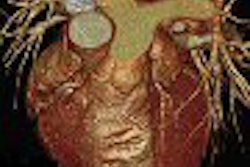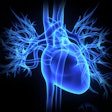Dear Cardiac Imaging Insider,
Like a lost dog that finds its way home, systemically injected stem cells have been found to make their way to damaged heart tissue, where they're needed for healing. A new SPECT/CT study, on canines with induced myocardial infarction, was conducted using many procedures and ingredients already approved for human use.
SPECT/CT is an excellent technology for tracking stem cells, according to researchers from Johns Hopkins University in Baltimore. SPECT offers high resolution for detecting the targeted cells, while CT provides the anatomical detail that pinpoints their location, they said.
The mechanisms by which radiotracer-marked canine mesenchymal stem cells wend their way to the heart are unknown, AuntMinnie.com contributing writer Kate Madden Yee reports in this issue's Insider Exclusive article. Nonspecific mechanisms, such as the presence of leaky blood vessels, may be responsible for the cells' immediate postinjury migration, the team reported, but speculation centers on active homing for their movement later on.
Today's Cardiac Imaging Insider also features some intriguing secondary results from the data-rich Multi-Ethnic Study of Atherosclerosis (MESA). A retrospective analysis of MESA data suggests that where you live may be more important than where you're from as an indicator of coronary artery calcium.
Also in this issue, be sure to check out our Technology Review article on Cardiac PACS. Facilities are finding specialized PACS packages to be the only way to deal with sharply rising cardiac procedure volumes, AuntMinnie contributing writer Wayne Forrest reports.
Simply scroll through the stories below to find more important news about cardiac imaging. If it affects the way you look at the heart, you'll find it in the Cardiac Imaging Digital Community.



















